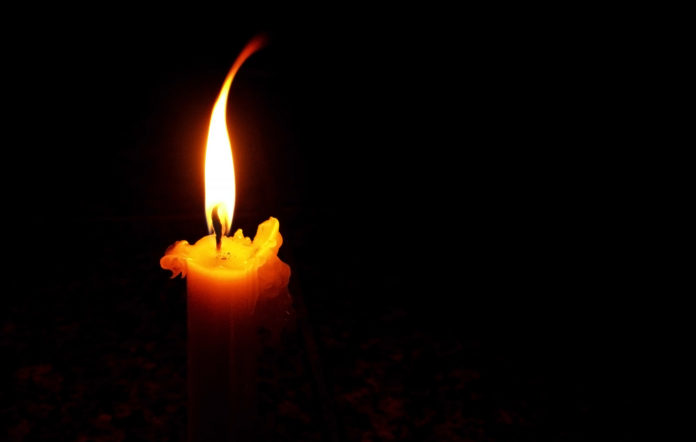 By Rabbi Dovid Heber, Star-K Kashrus Administrator
By Rabbi Dovid Heber, Star-K Kashrus Administrator
This year, 5773, Pesach begins on the night of March 25, 2013. Pesach has not occurred so early in the Gregorian calendar since 5659 when Pesach began on the night of March 25, 1899 – 114 years ago! Why is this so uncommon and why does it happen this year?
In general, the Jewish holidays (and Hebrew dates) of the sixteenth year of the 19-year cycle fall on the earliest dates in the civil calendar, since it is two years after the most recent leap year. [Note: The holidays and dates that occur between Tishrei and Shevat fall earliest in the 17th year of the 19-year cycle, e.g., this coming Rosh Hashanah, etc.]. Furthermore, the last time leap years were two years apart (causing dates in the second of the two to be exceptionally late within the civil year) were years #6 and #8 of the 19-year cycle. Therefore, since year #16 is eight years later and follows the longest period after such a pair of leap years (the only other pair is #17 and #19), the Jewish calendar is the earliest possible within the 19-year cycle.
But why is this year’s Pesach even earlier than Pesach of other years that occurred during the 16th year of the 19-year cycle (e.g., 5754/1994)?
The answer is based on the time of tekufos Nissan (the beginning of spring as defined by Chazal). According to Rav Ada (whose tekufos times are used for our calendar) , in the 16th year of the 19-year cycle, tekufas Nissan will always occur 15 days, 3 hours, 25 minutes, 7 chalokim (there are 18 chalokim in a minute), and 36 rega’im (there are 76 rega’im in a chalek) after the molad of Nissan. (Within the 19 year cycle, this is the latest time possible. In some other years of the 19-year cycle, the tekufah could even be before the molad.)
The molad of Nissan was shortly after 6 a.m. on Tuesday and Rosh Chodesh was on Tuesday. That is one of the latest times possible for Nissan. This is because this coming year, the molad of Tishrei (exactly six months later) will occur shortly before midday on Thursday and Rosh Hashanah will be on Thursday. This is shortly before the cutoff time of 12 noon. [If the molad of Tishrei would occur at 12 noon or later, Rosh Hashanah would move ahead to Shabbos. The way the calendar works, the previous Rosh Chodesh Nissan and Pesach would have been pushed ahead by two days to Thursday, with Pesach falling after tekufas Nissan. However, that did not happen. The molad is just before the cutoff time, creating the scenario we are in.]
So, in short, there is a domino effect. The “late” (just before the cutoff) molad of Tishrei (which determines the day of Rosh Hashanah) causes a late molad for the previous Nissan (on the morning of Rosh Chodesh), which in turn causes a late tekufas Nissan and an early Pesach.
The exact times this year are as follows: 15 days, 3 hours, 25 minutes, 7 chalokim and 36 rega’im after the molad of Nissan, which occurred on Tuesday, Rosh Chodesh, 21 minutes and 14 chalokim after 6 a.m., bringing us to a relatively late tekufas Nissan on Wednesday morning, the second day of Pesach, March 27, at 9:47 + 3 chalokim + 36 rega’im. This is slightly more than an hour earlier than the latest possible tekufas Nissan.
A relatively late tekufas Nissan time (due to the fact that it is year #16 and the molad was relatively late) means a civil calendar date, March 27 (the tekufah and civil calendar date occur around the same time every year, because they are both based on the solar year), that occurs late in the Jewish calendar (16 Nissan; in other years, the tekufah is earlier in Nissan or even in Adar). Stating this the opposite way, a very late Jewish calendar date (16 Nissan) occurs on a very early civil date (March 27). Therefore, Pesach is very early this year.
Of course, all of this was facilitated by making Marcheshvan and Kislev 29 (and not 30) days, thereby causing the “early Pesach.”
So, the reason Pesach is the earliest since 5659/1899 is two converging events that infrequently occur: It is the 16th year of the 19-year cycle and the molad was almost the latest it can possibly be on Rosh Chodesh Nissan. Thus, the tekufah and civil date are relatively late in the Jewish year, causing the Jewish year to be exceptionally early in the civil calendar.
It is interesting to note that this year, as well as other “early” years, are the basis of a question asked by the Yad Ramah (Sanhedrin 13b).
Pesach must occur during the spring (tekufas Nissan). Therefore, the tekufah must occur on or before the 15th of Nissan as previously indicated. This year, according to Rav Ada, tekufas Nissan occurs on the second day of Pesach, March 27.
The Rambam (Hilchos Kiddush Hachodesh 4:2) says that if it is apparent that tekufas Nissan (the beginning of spring) occurs on or after the 16th of Nissan, the year should be converted to a leap year and a second Adar should be added, thereby ensuring that the 15th of Nissan is in the spring (see also Tosafos, Sanhedrin 13b). For these cheshbonos, the calculations of Rav Ada are used.
[It is beyond the scope of this discussion to explain in detail the different ways Chazal calculate the solar year and the tekufos (seasons). Rav Ada’s calculation is based on an “average year,” which is 235 lunar months (i.e., the number of months in a 19-year cycle) divided by 19. That comes out to slightly less than 365 days, 5 hours and 55.5 minutes. See Sefer Shaarei Zemanim, siman 1, footnote 14, for a discussion regarding the scientific time for the spring equinox, which occurs this year several days before Pesach. It is not considered tekufas Nissan and does not answer the following question of the Yad Ramah.]
According to Rav Ada, the tekufah occurs this year on Wednesday, the 16th of Nissan (March 27). If so, asks the Yad Ramah (Sanhedrin 13b), why hasn’t this year been converted to a leap year with the addition of another Adar to ensure that the 15th of Nissan occurs in the spring? How can the first day of Pesach occur before tekufas Nissan (i.e., in the winter)?
The Yad Ramah is therefore mechadeish that an extra Adar is necessary only if tekufas Nissan begins on the 17th of Nissan (or later). Therefore, this year (and every 16th year of the 19-year cycle) is not a leap year, as tekufas Nissan occurs before the 17th of Nissan.
Another answer to the question of the Yad Ramah is found in Sefer Shaarei Zemanim (1:5). The Baal Hama’or in Rosh Hashanah (20b) says that Rosh Hashanah can occur on any day that the new moon is visible somewhere on the earth, even if that place is found in the westernmost regions of the globe where the time is 18 hours earlier than Yerushalayim. The Sefer Shaarei Zemanim applies the sevara to Pesach and tekufas Nissan. As long as tekufas Nissan occurs while it is the 15th of Nissan somewhere on Earth, we can say that Pesach begins “bechodesh ha’aviv” and a leap year is not necessary. In theory, the latest possible tekufas Nissan can occur at 11:01 + 36 rega’im on the morning of the 16th of Nissan. According to the Baal Hama’or, then, in the westernmost regions of the globe, tekufas Nissan/spring begins shortly after 5 p.m. on the 15th of Nissan, allowing the first day of Pesach to still fall out somewhere on Earth after tekufas Nissan, bechodesh ha’aviv. Therefore, a leap year is not necessary this year or in any 16th year of the 19 year cycle.
The next time Pesach is scheduled to begin this early, is in 76 years – in 5849, when Pesach begins on the night of March 25, 2089. May we merit long before then the coming of Moshiach speedily in our days.
A similar article appears in the Tzav/Pesach 2013 edition of Yated Ne’eman in the Calendar Calculations Column by Rabbi Dovid Heber. The above has been re-printed with permission of Yated Ne’eman.
(YWN World Headquarters – NYC)











8 Responses
wow, this is really complicated.
Can anyone explain this basically what the article is saying in simple english, please?!
I studied science and I find that this article is really too much. I can not believe the average person can read this through to the end with comprehension.
Here’s the short version: In any 19-year cycle, the year we’re in now (spring of the 16th year and autumn of the 17th) has the earliest calendar.
Comparing this year to the 16/17th year of other cycles, it comes out sort of randomly. (I mean that it can be calculated, but the pattern is not simple or obvious.) That’s why the last extremely early occurrence was exactly 6 cycles ago, and the next one is scheduled for exactly 3 cycles from now.
I agree that most people will not be able to follow this article. However, people who have some familiarity with the workings of the calendar might be able to follow it, and might even enjoy it.
For those who would like to become more familiar with these calculations, I recommend ArtScroll’s “The Jewish Calendar – Its Structure and Laws” by Rav Dovid Feinstein.
Here’s the layman’s run-down: our 13-month lunar calendar – compared with the Islamic 12-month lunar calendar which does not regard the last new moon of their year as a starting of the month, and compared with the Gregorian (previously Julian) calendar of the 12-month fluctuating calendar of the Catholic church – is most accurate. Therefore, comparing it with other calendars already in use means that our calendar is based on time, while the other calendars are based on arbitrary rule for an ever-changing religion. You may have noticed that your Armenian friends celebrate Christmas on a different day; this is because Jesus’ birth was likely recorded by the Jewish lunar calendar, and hundreds of years later, reconciled with the new Christian faith’s calendar which considers only several timelessly accurate events: the vernal (Spring) equinox, and leap years. It’s an apples-to-oranges comparison, because one is algorithmically predictable, while the other one must rely on the previously-recorded calendars and make adjustments based on observed positions for leap year, on which subsequent years are based.
What I meant was that Armenian Christian friends celebrate Christmas a different day than other Christians. The Armenian, Coptic, Julian, Gregorian calendars, etc. have all undergone frequent adjustments to reconcile each other with Christianity’s view on when certain significant events occurred, and the Islamic calendar had a the right idea when using the lunar calendar, but fell short trying to reconcile it’s own significant events with the Christian religion. We Jews don’t have this problem, so while Pesach seems to be coming earlier this year, it’s mostly an illusion because our calendar is based solely on the the processes of the moon, and struggles to reconcile itself with the widely-accepted, long-established, but incredibly flawed Christian calendar.
Dear melamedOmelamud,
In your scholarly addendum to Rabbi Heber’s article your wrote, “… this is because j___’s birth was likely recorded by the Jewish lunar calendar …”
I would like to use your comment to prove that the Jews of Palestine 2000 years ago were fans of the National Football League. In America, the common date for j’s birthday is December 25. The Christian bible informs us that his parents were unable to find lodging at that time because there were so many pilgrims/tourists etc. in the area to celebrate some holiday/event. Well, as I read the Chumash, there is no Jewish holiday at the end of December which requires one to go to Jerusalem. Even Chanuka, a post-biblical holiday, is celebrated at home. Therefore, the inability of j’s parents to find room at the inn is a subtle hint that the Jews had come to Jerusalem to watch the Superbowl on wide-screen tv’s. The unanimous opinion of the Tanoiim, Amaroiim, Gaonim, Rishonim, Acharonim, etc. is that there were no wide screen tv’s available in the villages of Palestine to watch the Superbowl. There is no other explanation for the lack of accommodations around Jerusalem at the end of December.
And Channuka falls out on thanksgiving this year